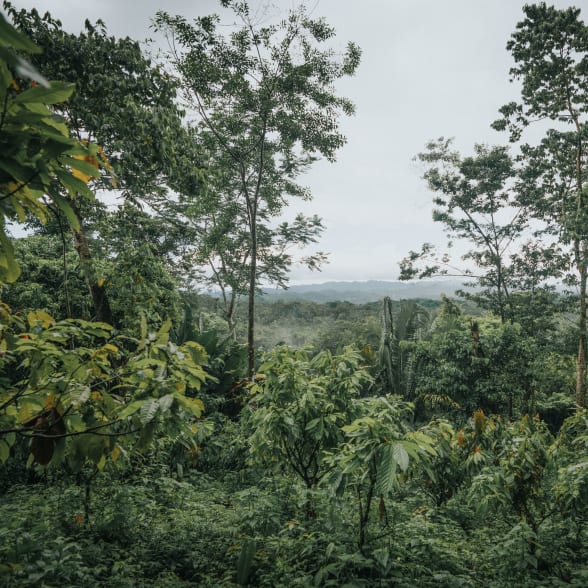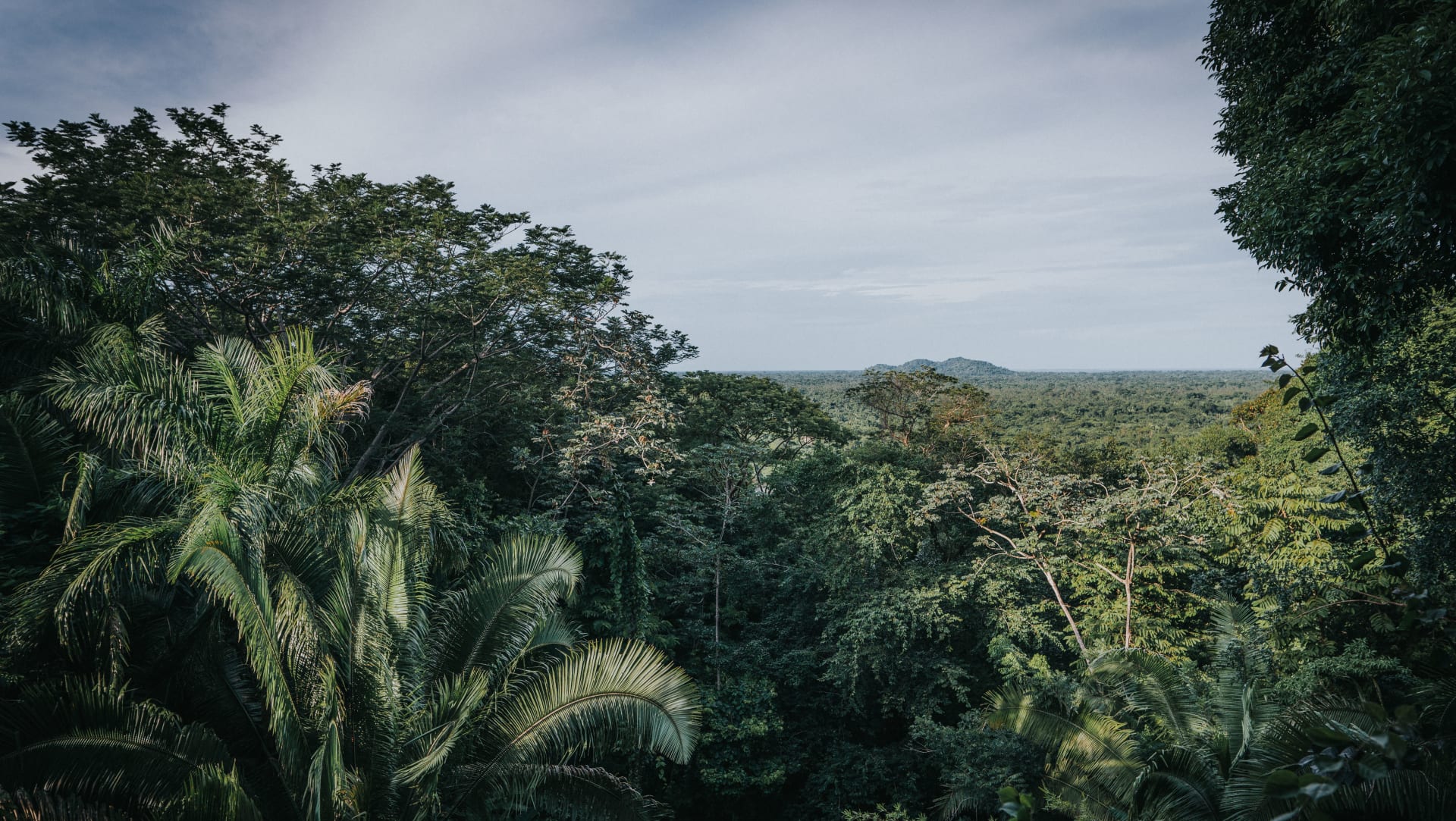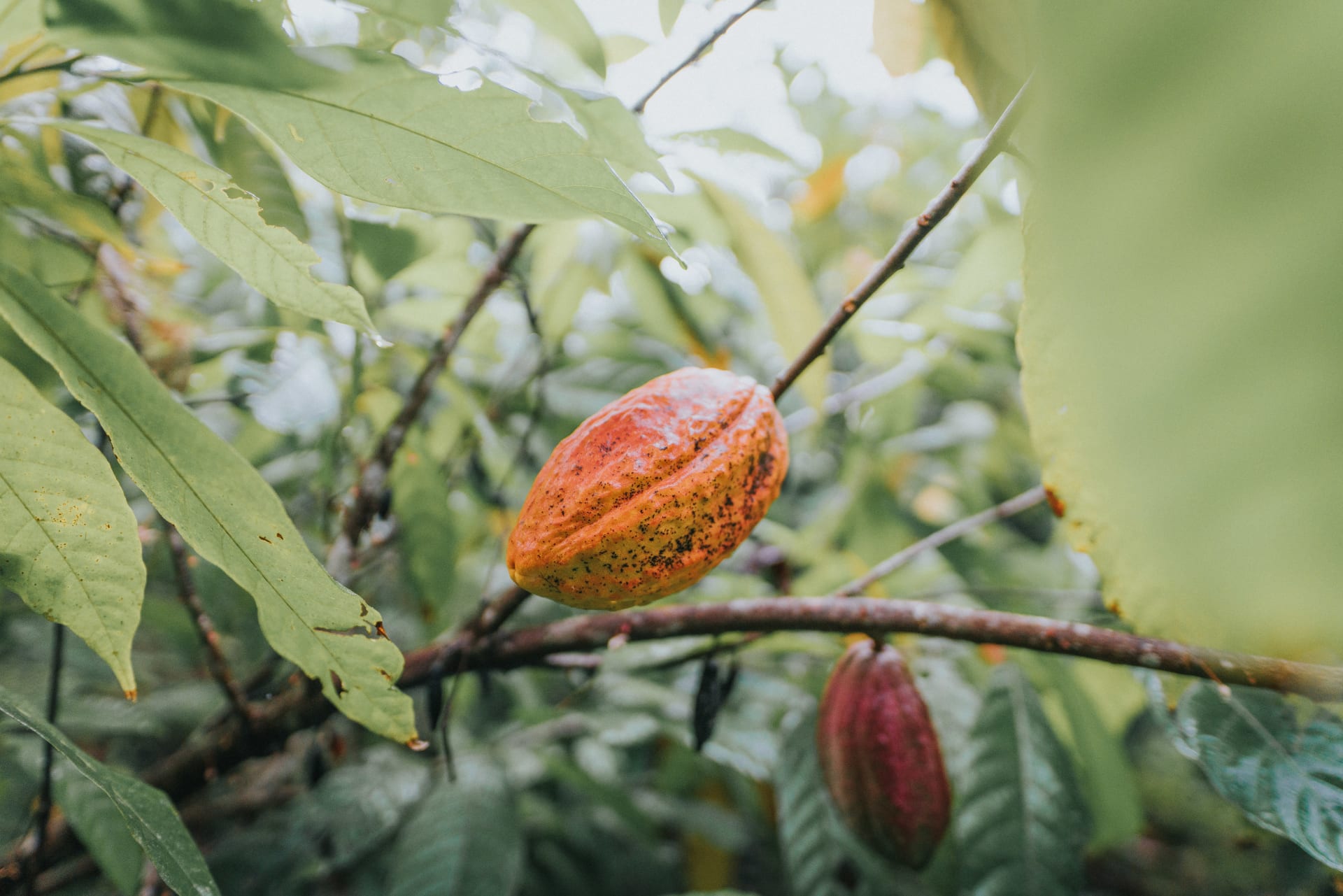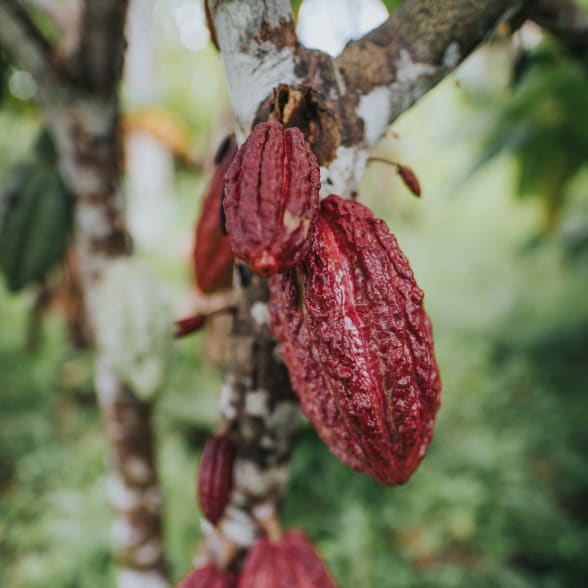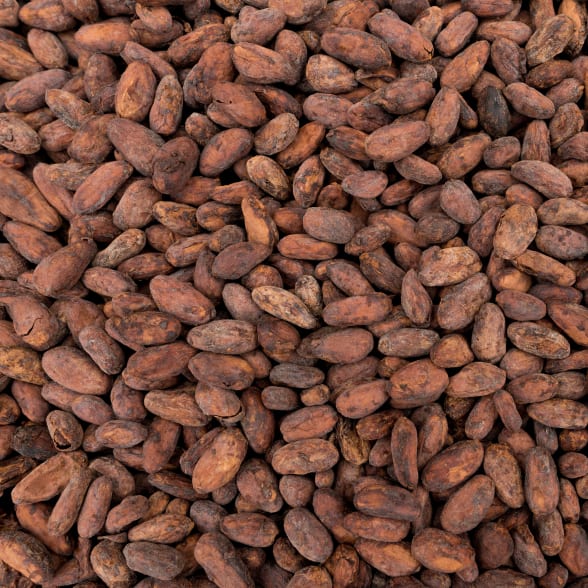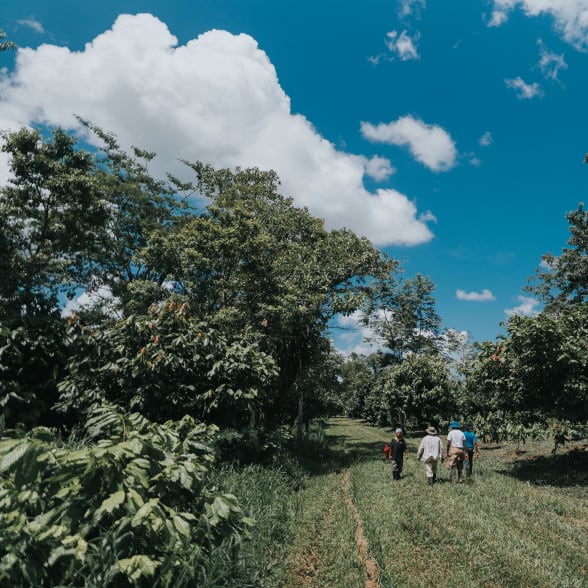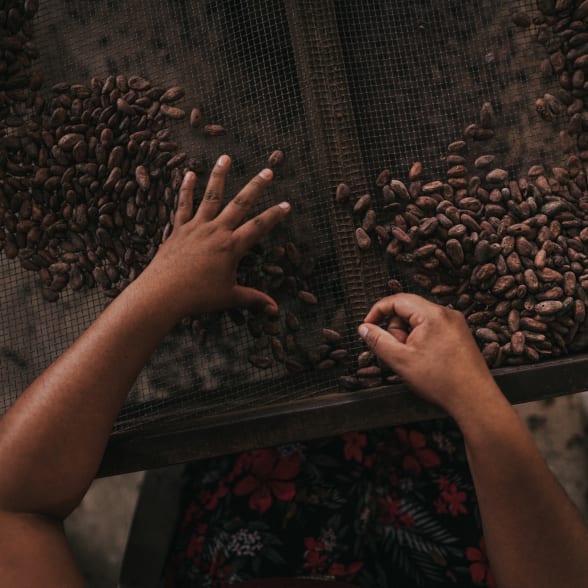Valrhona is committed to reducing its carbon use across all emission scopes:
- We have a target of cutting our carbon emissions by 50% (compared with 2018) by 2030
- We have also set a target of reducing carbon emissions by 90% between now and 2050 (compared with 2018)
GHG Protocol’s 2018 assessment of our carbon footprint revealed that emissions linked to cocoa and other derivatives made up 67% of our total - that meant 127,668 tons of CO2.
So that we can maintain our zero-carbon plans, our priority is to use cocoa beans that don’t come from deforested areas, and to help our partners to develop agroecological practices in their own work.
We want to further pinpoint our carbon footprint assessments at ground level, so we have launched a program with Nitidæ (an NGO which specializes in managing projects that combine environmental protection with stronger local economies) to calculate our cocoa beans’ carbon footprint from the growing area itself.
These field studies carried out and certified by the NGO have made it possible to survey, qualify and quantify the risk of deforestation over a 20-year period (beyond the EUDR, which sets a cut-off date of December 31, 2020).
This work will:
- Narrow down our carbon footprint calculations by plot and by region
- Quantify the carbon footprint of every kilogram of cocoa that Valrhona buys, right up to the bean processing site
- Identify what action can be taken to reduce carbon emissions in each specific region
